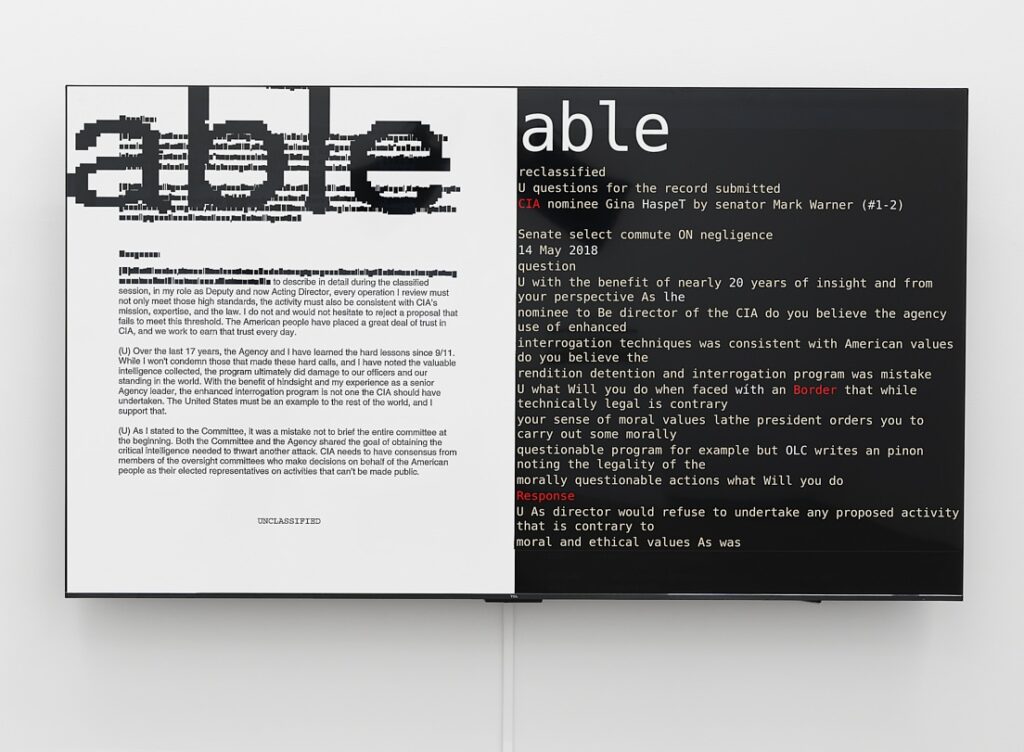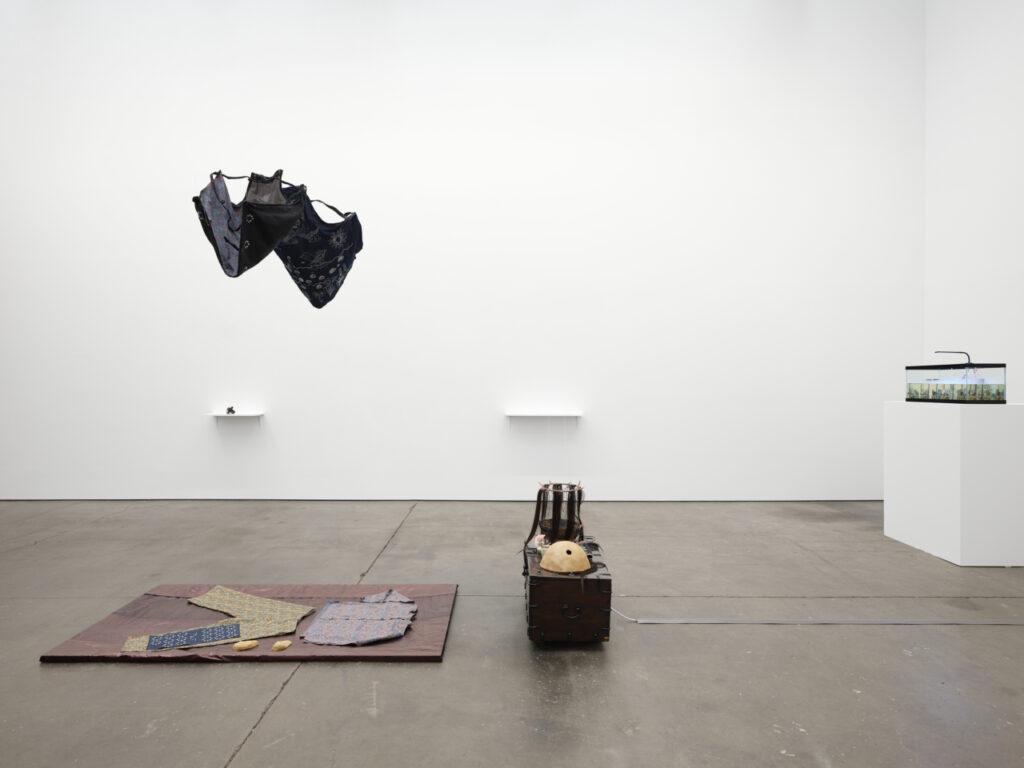In the exciting group exhibition “Fictions of Presence” at / (Slash) Art (through December 14), Dorothy Santos has curated the work of four artists whose practices mine the spaces between disciplines, identity, text, and image. With works that employ sensors, algorithms, and stereoscopy as a means to explore gender and cultural fluidity, the works hold space for the emerging, shapeshifting, and the unresolved. The exhibition prompts many engaging questions about the different ways humans, machines, and humans aided by machines “read” text or symbols, as opposed to image. In particular, Chelsea Thompto and Abram Stern offer distinctively poetic and political works that embrace where fluidity and the unresolved intersect with legibility, visibility, and translation in image and text.
In Thompto’s, “Fog as in…” (2024), the artist elegantly presents a poem on a vintage View-Master. Displayed as graphic text, the poem uses the shape-shifting ephemerality of fog as a metaphor for her trans experience. The View-Master’s stereoscopic illusion renders Thompto’s text spatially tangible, even as the language conjures a sense of absence. Moreover, with the View-Master designed for an individual viewer, as opposed to a group, Thompto prioritizes an intimate and subjective vantage, where viewers also determine the pace with which they advance the poem’s lines. While visually sparse, the View-Master’s illusion of depth urges viewers to dive into the between and betwixt of il/legibility.

In contrast to Thompto’s poetics, Stern’s computer algorithm “Operational Character Rendition” (2016—ongoing) takes a much more analytical approach to exploring the slippage of visibility and legibility. Under the Freedom of Information Act, government agencies are mandated to make some reports and records accessible to the public as an attempt to ensure that public agencies are acting in accordance with the laws, the will of the people, and are accessible for the open dialogue of the democratic process. Overseeing 17 intelligence agencies, the US Senate Select Committee on Intelligence (SSCI) periodically releases documents on-line. However, some of the individual organizations under its umbrella, like the CIA, have been sued to declassify documents, as was the case in 2014 when the ACLU sued to declassify the 6,300 page report on the detection and interrogation of US and foreign citizens in the years following 9/11.
Even when SSCI willingly releases documents they engage in subtle forms of obfuscation by releasing low-res scans of documents, as opposed to the original text files, which were produced using word-processing applications. Herein there’s a subtle differentiation that occurs where scanned documents become images composed of pixels, rather than text composed of individual letters or characters. While technically visible, the SSCI low-resolution scanned images makes the enormous cache of information challenging for computer-aided search and digital accessibility tools, like screen readers and text-to-speech, which decreases the ease of accessibility and legibility.

Presented in the gallery on a monitor, Stern’s program “Operational Character Rendition” attempts to “read” each document letter-by-letter, which it attempts to match to a dictionary and a list of “watch words” created by the Department of Homeland Security. In highly pixelated lettering, the word the program is attempting to decipher from the scanned document appears on the top left side while the crisply displayed matched word appears as text on the right side. As the words are identified, they are redacted in the scanned document. Most interestingly, when the accuracy of the word match is in question, the program’s proposed result will blink and cycle through the various conjugations and iterations of the root word that it has identified: “authorities” might cycle through “authority’s,” “authorizes,” or “Authority’s.”
As Stern’s application reveals the slow, labored process of machine “reading,” the artist also prompts viewers to consider the opacity of governmental agencies and processes.
Thompto’s and Stern’s works explores the gap between “reading” and seeing and the subjective and political aspect of the human eye in contrast to the machine eye. With the works that slow the “reading” or “looking” process, the artists invite us as viewer’s to step outside our habitual “scanning” of text. Most importantly, as Thompto and Stern hold space for private perspectives and public transparency, they create opportunities for empathy, poetry, analytics, and resistance.
FICTIONS OF PRESENCE through December 14 at / (Slash) Art, SF. More info here.




